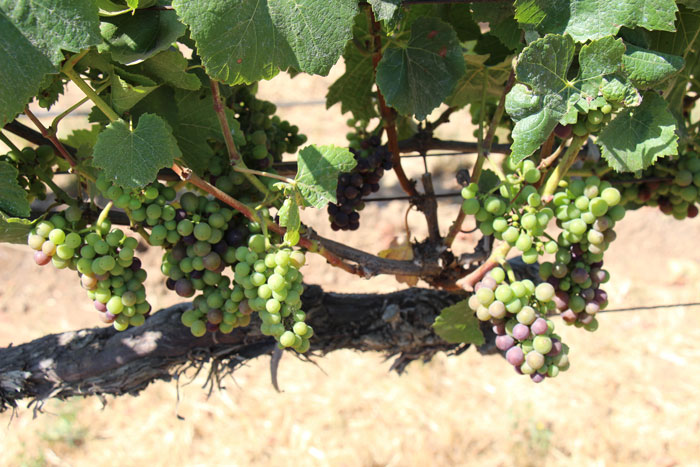
Current crop load reflects a hit-and-miss berry set for Livermore Valley grower
“We’ve been doing a lot of canopy work a lot earlier than normal,” Koch says. “We were shoot-thinning in Antioch on April 1. I’ve never even heard of that being done so early before. Lately, we’ve been pulling off laterals and trimming long canes.”

In the last week of June, wine grape grower Steve Koch was reporting heavier-than-usual vine growth in his East Bay area vineyards. At the same time, a few berries in some of his Zinfandel clusters were starting to turn red.
Based in Livermore, Calif., his company, KM Vineyard Services, serves clients throughout this region. It includes the Livermore Valley AVA. Covering an area 15 miles long, east to west, and 10 miles wide, north to south, the appellation is surrounded by coastal range mountains and foothills.
Warm weather in February kick-started Koch’s 2015 season, pushing the vines out early and resulting in much more vegetative growth than he typically sees.
“We’ve been doing a lot of canopy work a lot earlier than normal,” Koch says. “We were shoot-thinning in Antioch on April 1. I’ve never even heard of that being done so early before. Lately, we’ve been pulling off laterals and trimming long canes.”
His Pinot Noir began blooming the second week of April. However, cool temperatures for the rest of the month as well as May slowed the start and stretched out the bloom on his later varieties. Some of his Cabernet Franc, Cabernet Sauvignon and Mourvedre were still in bloom in the first or second week of June, Koch notes.
He’s predicting a slightly smaller crop than usual. That would be in line with 2014 production in his vineyards.
“Just like last year, we had a lot of hit and miss with the berry set this spring,” Koch says. “It started about three weeks early in many of our vineyards. In some spots, the berry set was good. In others, it wasn’t good at all. So, ripening and cluster size will not be uniform."
He expects veraison to start the second week of July, when he’ll begin thinning some clusters.
Rains between mid-February and early March helped re-charge the soil profile with water reducing the need for irrigation in many of his vineyards through May, Koch reports. Now, with the recent arrival of hot weather, irrigation has ramped up.
Pressure from powdery mildew this season has been about normal, he notes. However, due to the vigorous vine growth, Koch has had to revise his usual approach to controlling the disease. “Normally, we like to use a mineral oil early in the season, followed by sulfur later,” he says. “However, because the canopies came on so big, so fast, these materials weren’t as effective as we’d like. So, we had to start using systemic products to control powdery mildew much earlier than usual.”
About the Author(s)
You May Also Like



